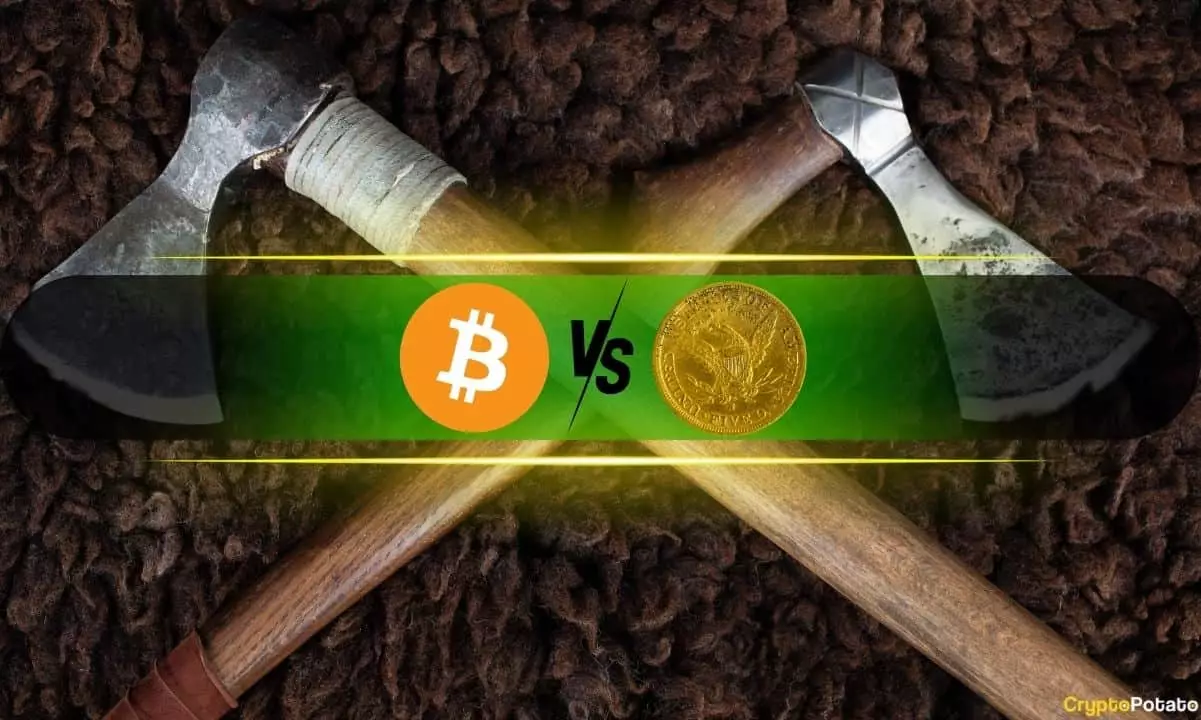In the world of investments, few dynamics have captured the attention of analysts and investors alike as compellingly as the trajectory of Bitcoin versus gold. Over the past six months, these two traditional and emerging assets have exhibited starkly different price movements, raising questions about their roles in modern finance and portfolio diversification. While gold has surged, hinting at its longstanding appeal as a safe haven, Bitcoin has found itself mired in stagnation. This article delves into the intricacies of these contrasting trends, exploring the underlying factors and potential implications for future investments.
Gold has recently achieved significant milestones, coming close to breaching the psychological barrier of $3,000 per ounce—an unprecedented achievement for the yellow metal. This ascent can be attributed to a confluence of factors, the most notable being the escalation of inflation rates in the United States and other economies. As prices rise, the purchasing power of fiat currencies diminishes, pushing investors toward gold as a hedge against this inflationary pressure. Furthermore, global uncertainty, particularly following the controversial actions of political leaders, including President Trump’s second inauguration, has sparked heightened interest in gold as a safe asset.
Investors, including central banks, have been rapidly reallocating their strategies, favoring gold during these tumultuous times. The asset’s historical reputation as a secure store of value during economic downturns has made it an attractive choice compared to more volatile investments. As confidence in this precious metal grows, market analysts predict that gold is not merely hitting new highs but is poised for a longer-term upward trajectory, reinforcing its dominance in the investment landscape.
Conversely, Bitcoin has encountered significant short-term challenges. After reaching nearly $110,000 on the day of Trump’s inauguration, the cryptocurrency has since pulled back dramatically and remains around 15% shy of its historical peak. This decline highlights a concerning trend for Bitcoin enthusiasts: its allure appears to be waning, particularly among U.S. investors. Indicators such as the Coinbase Premium metric have demonstrated a decreased demand for Bitcoin, suggesting that recent market excitement may be fading.
This situation raises crucial questions about the future of Bitcoin. The cryptocurrency market is notoriously unpredictable, often defying conventional expectations. Many experts believe Bitcoin’s price actions are influenced more by market sentiment and investor psychology than by tangible financial metrics. Thus, while the current outlook may appear bleak, the cryptocurrency could very well experience a rebound, returning to its previous highs in defiance of market trends.
The contrasting trajectories of gold and Bitcoin within the context of recent global events underscore their differing roles in the market. Gold’s reliable status as a hedge against inflation and economic instability aligns seamlessly with current investor sentiment. Despite its traditional nature, gold’s market capitalization stands at almost $20 trillion, dwarfing that of not just Bitcoin but several other financial assets combined. This bodes well for gold’s continued prominence in uncertain times.
In contrast, Bitcoin’s volatility continues to challenge its reputation as a reliable store of value. Its price fluctuations often create a sense of uncertainty for potential investors and could lead to trust issues in the long run. However, Bitcoin enthusiasts argue that its volatility is part of its appeal, allowing for significant gains in shorter time frames, making it an exciting—and risky—asset.
As we look ahead, the pronounced divergence in the price movements of gold and Bitcoin raises significant questions for both asset classes. Will gold maintain its upward momentum, driven by ongoing societal and economic challenges? Conversely, can Bitcoin find renewed traction and capitalize on the fundamentals that have historically propelled its price?
While market predictions remain speculative at best, one fact stands clear: the financial landscape continues to evolve rapidly, requiring investors to remain adaptable and aware of emerging trends. The behaviors of these assets, both influenced by external economic conditions and internal market dynamics, will be crucial in determining their trajectories in the months and years to come, making it an exciting time for market watchers.















